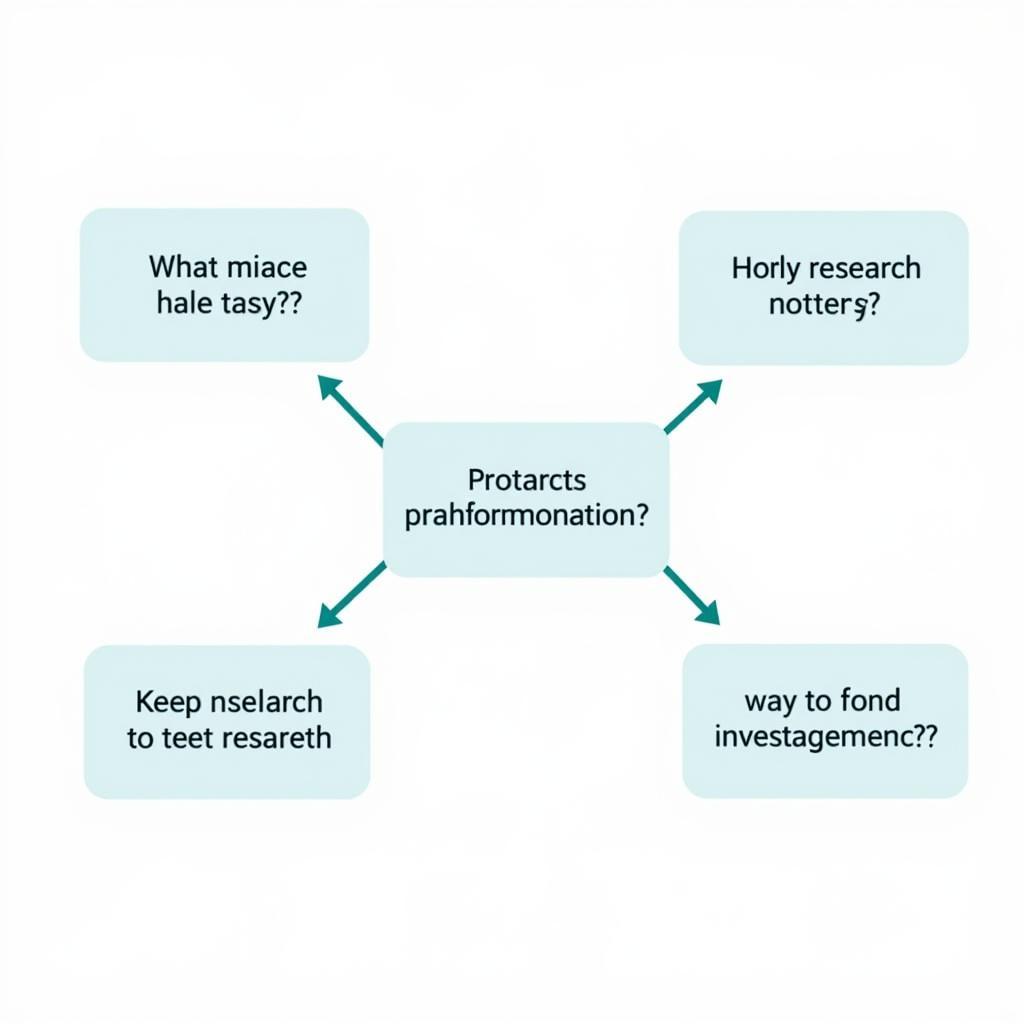Research paradigms are fundamental frameworks that shape how we approach research. They guide our understanding of the world, influence our research questions, and dictate the methods we employ to answer them. Understanding different research paradigms is crucial for anyone involved in research, especially within the realm of the paranormal, where established methodologies may not always apply. This article will delve into various examples of paradigms in research, providing a comprehensive understanding of their applications and implications.
One of the most commonly used frameworks is the positivist paradigm, often employed in scientific investigations. define research paradigm It emphasizes objectivity, quantifiable data, and the search for universal laws governing phenomena. Think of it like searching for a ghost by measuring electromagnetic fluctuations – a very structured, data-driven approach. Conversely, the interpretive paradigm prioritizes subjective understanding and meaning-making within specific contexts. For paranormal research, this might involve interviewing witnesses to a haunting and analyzing their personal experiences to understand the phenomenon’s cultural significance.
Positivist Paradigm: A Quantitative Approach
The positivist paradigm relies heavily on quantitative data collection methods such as surveys, experiments, and statistical analysis. It seeks to establish cause-and-effect relationships between variables, allowing for generalizations and predictions. In traditional scientific fields, this paradigm is dominant. However, in paranormal research, applying a purely positivist approach can be challenging due to the subjective nature of many experiences.
How is Positivism Applied in Paranormal Research?
While the unpredictable nature of paranormal phenomena makes strict adherence to positivism difficult, aspects of it can still be incorporated. For instance, measuring changes in environmental factors like temperature or electromagnetic fields during alleged paranormal activity provides a quantitative dataset. This data, while not definitive proof, can offer valuable clues and contribute to a more comprehensive understanding.
Interpretive Paradigm: Exploring Subjective Experiences
The interpretive paradigm recognizes that reality is socially constructed and multiple interpretations can exist. This paradigm focuses on understanding the meaning and significance of experiences within specific cultural and social contexts. It employs qualitative methods such as interviews, observations, and textual analysis.
Understanding the “Why” Behind Paranormal Beliefs
The interpretive paradigm provides a framework for understanding the “why” behind paranormal beliefs and experiences. For instance, investigating the cultural narratives and personal histories that shape individuals’ interpretations of ghostly encounters can offer rich insights. This approach acknowledges the subjective and culturally influenced nature of paranormal experiences.
Critical Paradigm: Challenging Assumptions
The critical paradigm challenges existing power structures and social norms. It examines how these structures influence our understanding of reality and shape our research questions. This paradigm is often used in social justice research and can be applied to paranormal research to question the dominant narratives surrounding these phenomena.
Unmasking the Social Constructs of the Paranormal
By applying the critical paradigm, we can explore how social, cultural, and historical factors shape our understanding of ghosts, UFOs, and other paranormal phenomena. This approach helps uncover hidden biases and power dynamics that influence the way these experiences are interpreted and represented.
canadian institute of health research
Pragmatic Paradigm: Combining Approaches
The pragmatic paradigm embraces a more flexible approach, acknowledging that different methods can be combined to address research questions effectively. It recognizes that both quantitative and qualitative data can contribute to a more holistic understanding. In paranormal research, this might involve using scientific instruments alongside interviews and historical analysis.
The Power of a Multifaceted Approach
By combining elements of positivism, interpretivism, and even the critical paradigm, researchers can gain a deeper understanding of paranormal phenomena. This multifaceted approach acknowledges the complex and multifaceted nature of these experiences.
Conclusion: Choosing the Right Paradigm
Choosing the appropriate research paradigm depends on the specific research question and the nature of the phenomenon being studied. Understanding the strengths and limitations of each paradigm is crucial for conducting rigorous and meaningful research in any field, including the exploration of the paranormal. By carefully considering the different examples of paradigm in research, we can navigate the complexities of the unknown and gain a deeper understanding of the world around us.
research methods for social work
 Choosing the Right Research Paradigm
Choosing the Right Research Paradigm
FAQ
-
What is a research paradigm? A research paradigm is a fundamental framework that shapes how research is conducted.
-
Why are research paradigms important? They guide research questions, methodology, and interpretation of results.
-
How do I choose the right paradigm? Consider your research question and the nature of the phenomenon being studied.
-
Can paradigms be combined? Yes, the pragmatic paradigm encourages combining different approaches.
-
Is one paradigm better than another? No, each has its strengths and limitations, suitable for different research goals.
-
How do paradigms apply to Paranormal Research? They provide a framework for understanding and investigating paranormal experiences.
Need assistance with your research? Contact us at Phone Number: 0904826292, Email: research@gmail.com or visit us at No. 31, Alley 142/7, P. Phú Viên, Bồ Đề, Long Biên, Hà Nội, Việt Nam. Our customer support team is available 24/7.